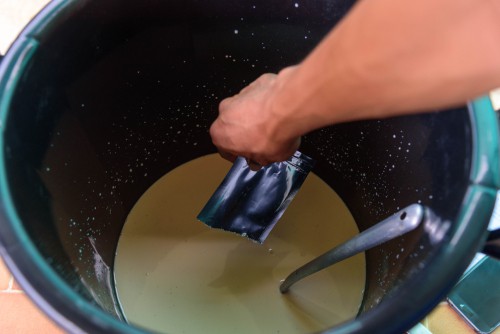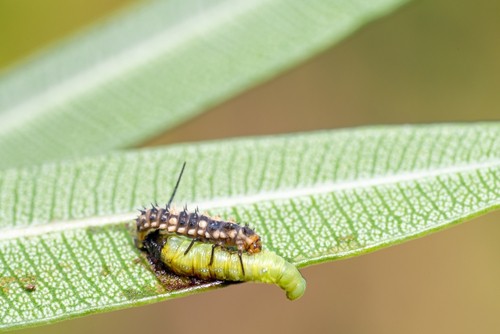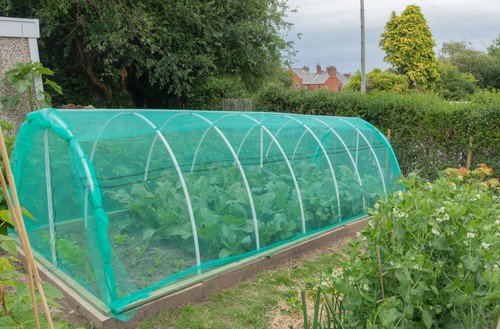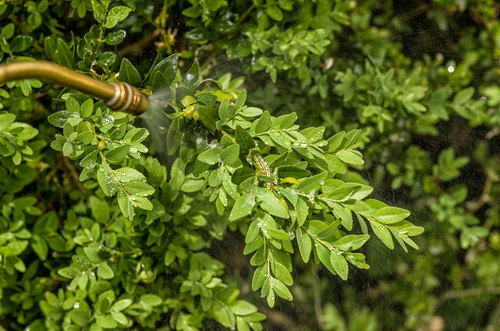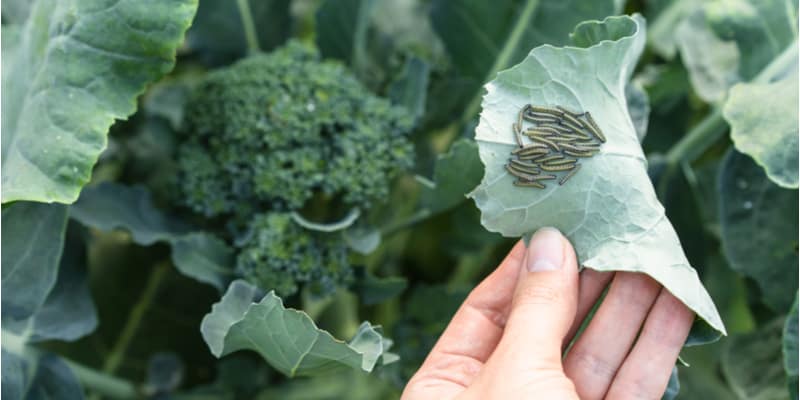
8 Organic Ways to Stop Caterpillars Eating Your Plants
Our site is reader supported, this means we may earn a small commission from Amazon and other affiliates when you buy through links on our site.
Before transforming into beautiful butterflies or moths, caterpillars need a lot of food for energy purposes and that is why you may find them camping in your garden. Caterpillars are not generally harmful, but they can cause damage to your crops if left unchecked.
So, how do you prevent these caterpillars from wreaking havoc on your plants? You can use pesticides but they may be toxic for the other animals and insects in your garden.
Instead, you will find plenty of accessible organic ways you can ensure the safety of the plants and keep caterpillars at bay. These organic methods are discussed in detail below so get ready to rid of those pesky caterpillars the organic way.
Popular natural methods of deterring caterpillars
1. Bacillus Thuringiensis
Hailed as one of the most effective ways to deal with caterpillars, Bacillus Thuringiensis is a naturally occurring bacteria found in the soil. You can purchase this bacteria from local stores or online; thus, it is easily accessible. Bacillus Thuringiensis works best on young caterpillars and if applied properly, it works like a charm.
Ensure that the foliage is well coated because that is where the caterpillars will attack first. Bacillus Thuringiensis is not toxic to the environment and therefore; will not affect plants or other animals.
2. Recruit the help of birds such as blue tits which eat caterpillars
Birds are the number one predators of caterpillars as they love to hunt them. Regardless of whether it’s chickens or blue tits, having birds around is an easy way to rid of caterpillars and keep the plants safe. Place feeders and watering fountains to attract birds just in case you do not have chickens around. Shrews and spiders also have a liking for caterpillars.
3. Release or encourage ladybug larva, yellow jackets, and lacewings into your garden which naturally prey on caterpillars
Surprisingly, birds are not the only top predators concerning caterpillars. You find that other insects like ladybug larva, yellow jackets, and lacewings can be beneficial as they naturally prey on caterpillars. You can use this method as a long-term control measure if your garden keeps attracting large numbers of caterpillars seasonally. Once the caterpillars are warded off, the insects will move elsewhere to find other sources of food.
4. Plant some herbs that are thought to deter caterpillars such as thyme and peppermint
Some plants such as sage, thyme, mugwort, and peppermint naturally repel caterpillars. You can incorporate these plants in your garden and go about business with no worries of a caterpillar infestation. These protective plants are easy to grow and most of them are used in the kitchen thus, killing two birds with one stone.
5. Cover plants with fine netting or netted mini grow tunnels
Another great method is using a fine mesh barricade to prevent the caterpillars from coming into contact with the plants. The mesh permits lights to get through; therefore; the plants still get their nutrients without any problems.
6. Organic sprays
If you are not able to utilise the methods above, you can always make a spray to keep the caterpillars away. There are wide varieties of sprays you can make including chilli, neem oil, vinegar, garlic and pepper, or regular soap and water.
These sprays do not take effect immediately like chemicals but, they do not harm the plants. With several applications, you can prevent the caterpillars from eating the foliage; therefore, starving them or killing them off. You can find procedures on how to make these sprays online depending on the level of infestation.
7. Burlaps
Burlaps are a great way of tricking caterpillars into assembling in one place. Wrap the burlap around the tree and when it gets hot, the caterpillars will assemble under the burlap for shade. Once they assemble, you can kill them or collect them for disposal. Burlaps work well for large infestations, especially on trees or shrubs.
8. Manually remove them
If you spot a few caterpillars around, you can just remove them by hand. This goes for those who are not afraid of touching caterpillars. If you are squeamish, it is better to rely on other methods lest you drop them and runoff in fear.
What works for one garden, may not work for the next. Try multiple organic methods to find the one that works for you effortlessly. They say prevention is better than cure; therefore, if you spot any moth or butterfly eggs, get rid of them earlier to prevent an infestation.
If you have an issue with caterpillars on roses, don’t forget to read my guide on dealing with caterpillars on roses which is usually sawfly larvae
